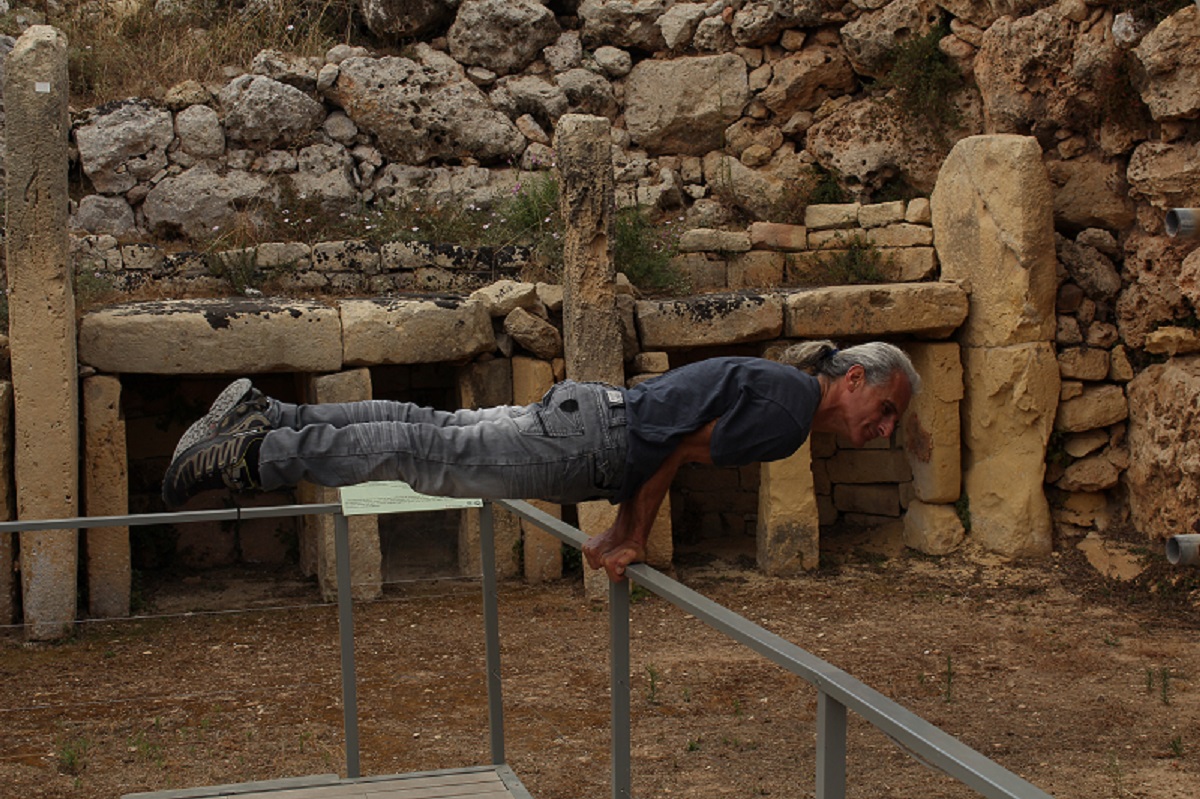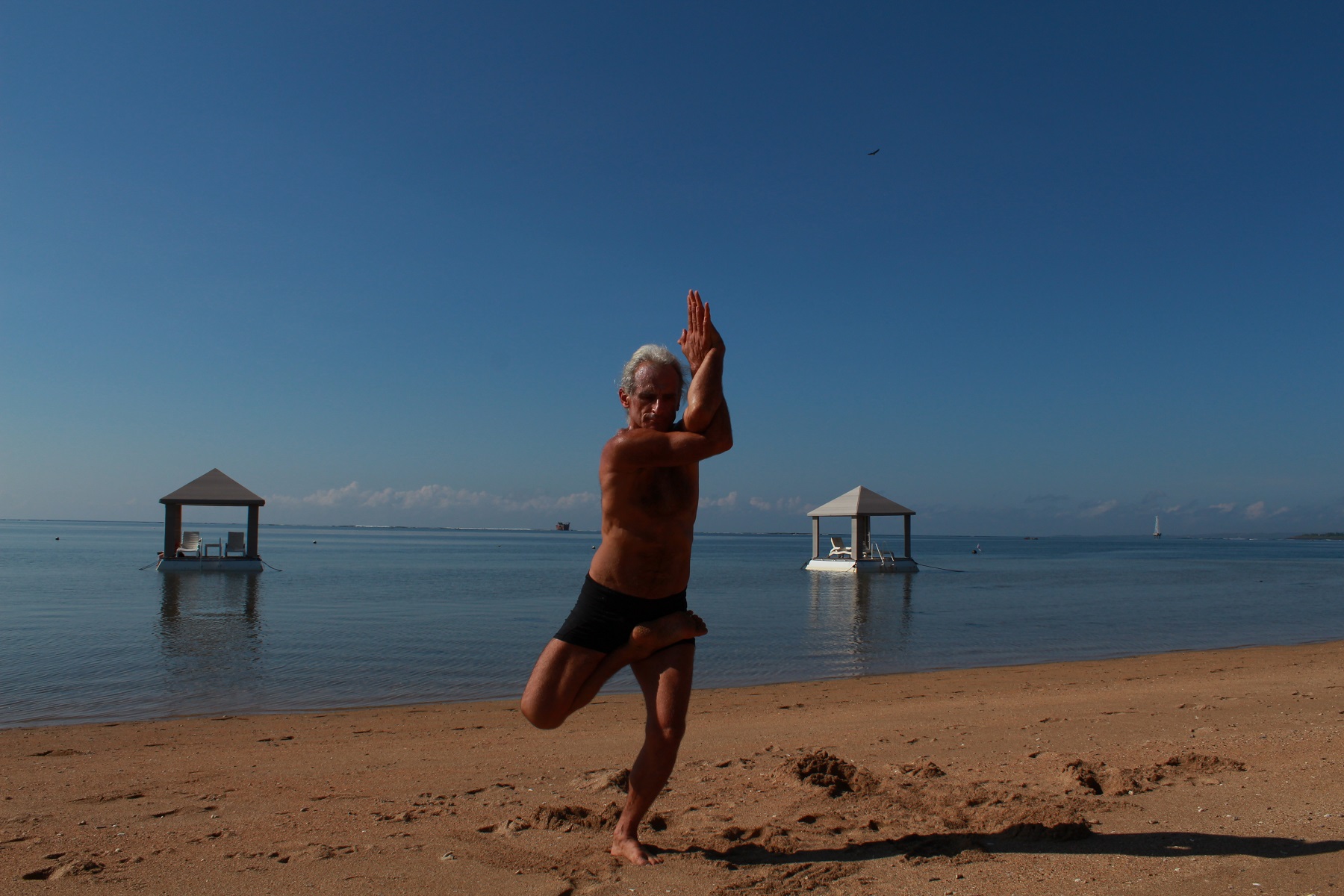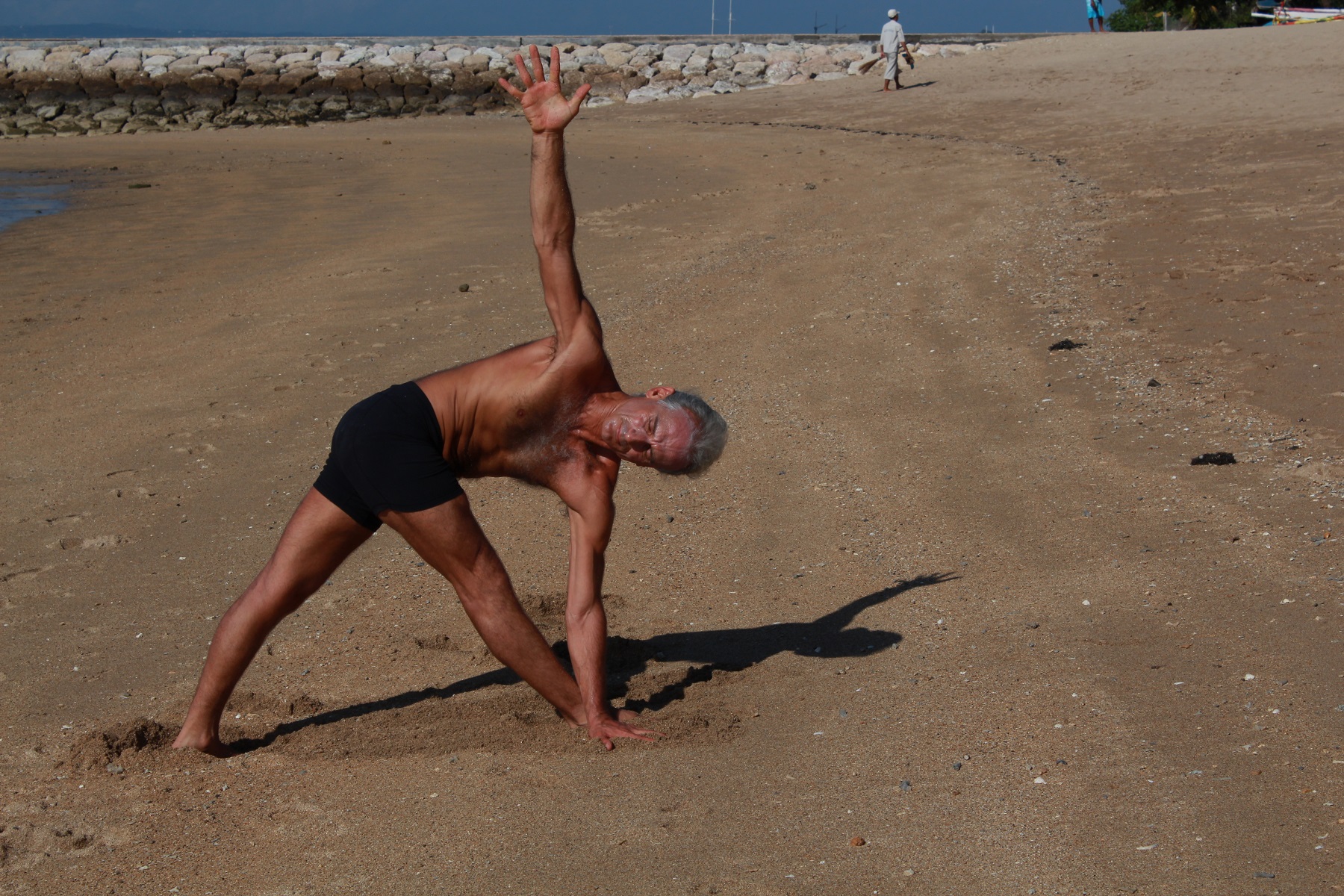How does the practical application of some physiology and anatomy theory can make a difference in your yoga practice? Below we have presented some ’quickies’ on how to make not just your yoga practice but your daily exercises more intelligent, more effective and safer. Then we have some of the basic principles of Yoga Therapy that have been adapted from our book ‘Applied Anatomy and Physiology of Yoga’ . If you’d like to know more about how to use your yoga practice as a healing therapy for yourself, join the Yoga Anatomy and Physiology Online Course or the Essential Teacher Training Online Course
1; Basic practice of hatha yoga asanas (static postures) use isometric activations when the body is kept still in postures and no movement about a particular joint is occurring. Basic practise of hatha yoga vinyasas (dynamic exercises) uses isotonic activations when the body is moving from one posture to the next and there is movement about a particular joint.
2; One-legged poses, such as the one shown in the photo above, are very effective in strengthening the standing leg and hip. Theys usually oblige the hip abductors of the weight-bearing leg to generate powerful forces through the hip joint complex.
3; In postures such as the Triangle posture (see photo below) beginners should keep the neck in line with the spine in order to minimise the risk of vertebral artery occlusion. To reduce the risk of vertebral artery occlusion in sideways bending postures such as ‘Triangle Posture’ (trikonasana) and ‘Extended side angle posture’ (parsvakonasana) for beginners, these postures can be simplified to have the head facing the floor. If a beginner attempts to rotate the head upwards in order to complete what they believe to be the final posture, there is a high probability they will collapse into their neck which will fall with gravity into side flexion and extension which leaves them at risk of vertebral artery occlusion. In the photo below the alignment of the neck has been enhanced slightly by moving the right ear away from the right shoulder to increase the length on . This is not the same as simply letting the neck fall, which is what can cause problems such as vertebral artery occlusion or neck pain.
4; Use your diaphragm to breathe into the abdomen to help you relax and balance your nervous system and to help your reproductive health. The diaphragm (and breathing in general) is often thought of as the bridge between body and mind because it can be controlled by the conscious mind (which relates to the somatic nervous system) and the unconscious mind (which relates more to the autonomic nervous system). Breathing diaphragmatically (abdominal breathing) can reestablish the natural balance between your parasymphathetic nervous system (the ‘relaxation response’) and your sympathetic nervous system (the ‘flight or fight response’). Natural breathing or controlled diaphragmatic breathing can calm nerves, balance emotions, and enhance the functioning of the body systems that are under autonomic (automatic) control such as those to do with digestion, reproductive health, immunity and healing.
It is good to note that in ‘arm-balancing’ posture Mayurasana that is shown in the top most photo in this blog my abdomen is completely relaxed and I am breathing diaphragmatically. This not only gives me strength and relaxation here but also allows a tremendous massage of the internal organs.
BASIC PRINCIPLES OF YOGA THERAPY:
Here are some general principles that may be applied when there are physical problems. This is an overview of what not to do in certain situations and what may help the healing process in other situations.
In dealing with any injury or illness, the most important thing is to not make things worse. If there is any uncertainty as to the nature of the problem, it is safest to rest the injured part, and if necessary, rest the entire body, then refer the person to a health professional. Never assume that, as the teacher of a yoga class, you have to know how to cure someone.
First, it is important to learn the general principles of injury and healing. When there is some understanding of what is happening in a particular persons body, it becomes relatively safe to work with the holistic principle of improving the health of the body as a whole without really interfering with an injured part. As the overall health improves then the injured part often improves also. Therefore, improving a body’s overall level of strength, Flexibility, musculoskeletal control and cardiovascular Fitness is the first step in the process of more specific yoga therapy.
Generally, when dealing with someone who has a musculoskeletal injury or problem one needs consider the following factors:
• Is the injury acute or chronic?
• Is the injury irritable or non-irritable?
Irritable conditions are easily stirred up and must be treated very carefully or else they can become very sore after exercise or after a treatment.
Non-irritable conditions, on the other hand can be treated or exercised quite firmly. While they may have a sense of discomfort while exercising or while being treated, the discomfort settles down quickly after the treatment.
Treating Acute Injuries with Hatha Yoga:
An acute problem usually shows the cardinal signs of inflammation, and is often quite recent.
The 5 cardinal signs of inflammation usually seen in acute conditions are:
• Redness
• Pain
• Heat
• Swelling and sometimes
• Loss of function
Acute conditions are usually treated in medical circles with the R.I.C.E. principle (Rest, Ice, Compression and Elevation).
If a musculoskeletal problem is acute in nature, it is usually best to rest the injured part, or if necessary, rest the entire body.
Hatha yoga can be still be practised in this situation if the problem area can be suitably bypassed and allowed to rest. Postures need to be suitably modified and a greater emphasis made towards a gentle more relaxed practice that does not generate too much excess heat.
Treating Chronic Injuries with Hatha Yoga [Table 2]
Chronic injuries are usually long-standing injuries where the inflammation has subsided.
• Chronic musculoskeletal injuries or conditions may be cautiously approached with the following general methodology, when there are no signs of inflammation.
• When there are no contraindications, one can use hatha yoga postures and exercises, breathing exercises, and relaxation to give general and specific improvements in circulation, strength, flexibility, and musculoskeletal alignment.
To improve circulation use:
• Breathing techniques (Pranayama) to utilise the respiratory pump of circulation.
• Dynamic exercises (Vinyasa), activating and relaxing muscles during movement to utilise the musculoskeletal pump of circulation and varying the speed of movements to utilise the centripetal pump of circulation.
• Inverted and semi inverted postures (Viparita Karani) to utilise the Gravitational pump of circulation
• Static postures (Asanas), creating regions of relative high pressure (compression and/or isometric muscle activation) and relative low pressure (stretching and/or muscle relaxation) to utilise the postural pump of circulation.
• Co-activation of opposing muscles around joints (Bandhas) to utilise the muscle co-activation pump of circulation.
To improve strength develop:
• Muscle control: develop the ability to fully relax or turn off a muscle and then smoothly activate or turn on a muscle to its maximum level of muscle activation in any of its states.
• Muscle balance: develop muscle symmetry and learn how to co-activate muscles for increased joint stability
• Symmetry: restore and/or develop balance between:
– Left side and right side of the body
– Agonist and antagonist muscle groups
– Anterior and posterior, medial and lateral, and superior and inferior musculature.
– Muscle co-activation: develop the ability to co-activate (simultaneously tense) agonist and antagonist muscle groups for increased joint stability (bandhas).
• Muscle specificity: To develop functional task specificity:
– Use isometric, isotonic and isokinetic exercises
– Use varied velocities of joint movement
– Move joints through their full range of motion (ROM)
– Use weight-bearing (WB) exercises and non-weight-bearing (NWB) exercises
– Use open-chain (OC) exercises and closed-chain (CC) exercises
To improve flexibility Develop:
• Joint mobility: ie develop ease of joint movement not just the ability to stretch further.
• Symmetry of flexibility: both inter-joint, ie between right and left sides of the body; and intra-joint (i.e. superior and inferior, medial and lateral, and anterior and posterior).
To improve musculoskeletal alignment:
Work towards restoring and or developing normal:
• Joint structure
• Joint space
• Joint symmetry: both inter-joint, ie between right and left sides of the body; and intra-joint (ie superior and inferior, medial and lateral, and anterior and posterior).
Chronic injuries Table 2
Share this Post





